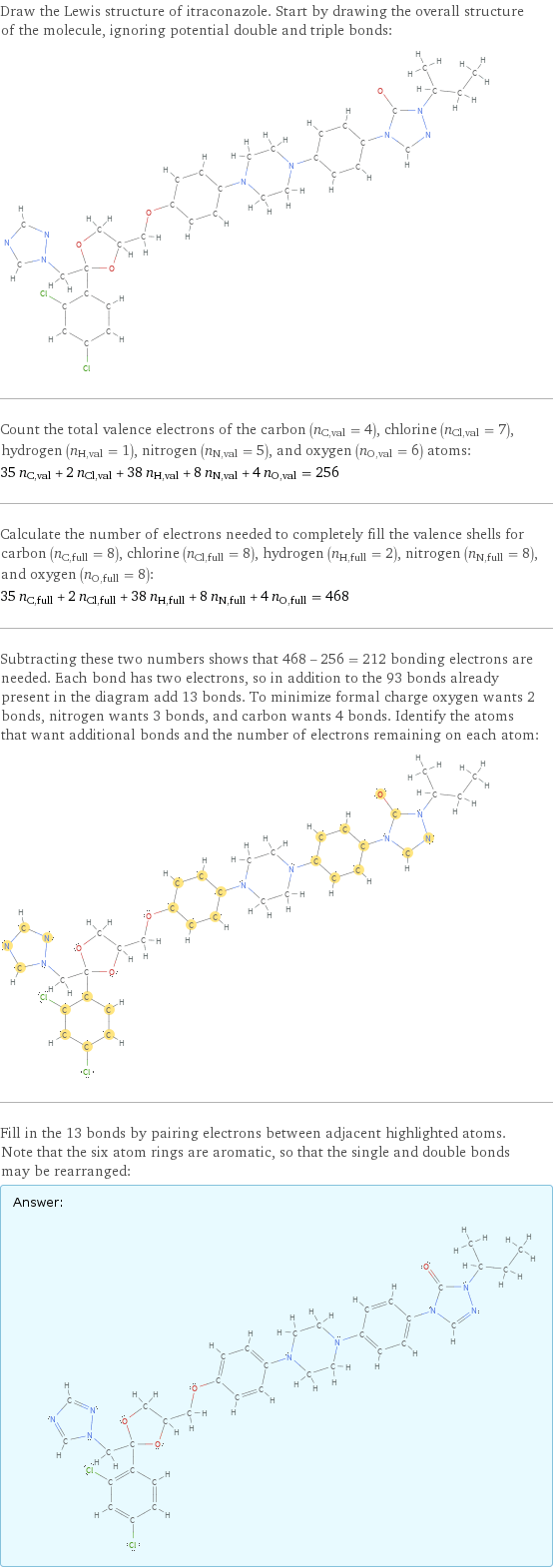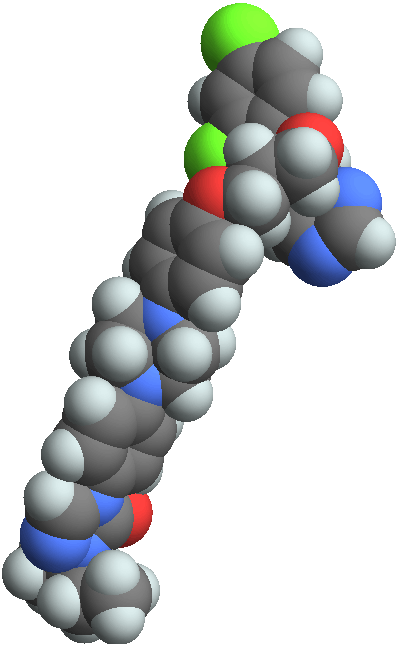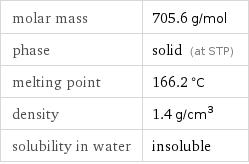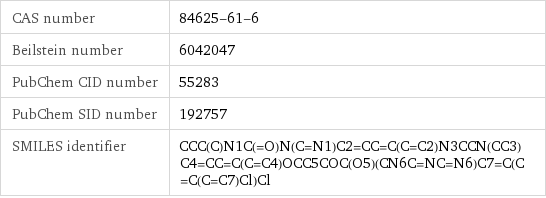Input interpretation

itraconazole
Chemical names and formulas
![formula | C_35H_38Cl_2N_8O_4 name | itraconazole IUPAC name | 2-butan-2-yl-4-[4-[4-[4-[[(2S, 4S)-2-(2, 4-dichlorophenyl)-2-(1, 2, 4-triazol-1-ylmethyl)-1, 3-dioxolan-4-yl]methoxy]phenyl]piperazin-1-yl]phenyl]-1, 2, 4-triazol-3-one alternate names | itrizole | oriconazole | sporanox mass fractions | C (carbon) 59.6% | Cl (chlorine) 10% | H (hydrogen) 5.43% | N (nitrogen) 15.9% | O (oxygen) 9.07%](../image_source/6bb83af3357c36045544378e20e786d5.png)
formula | C_35H_38Cl_2N_8O_4 name | itraconazole IUPAC name | 2-butan-2-yl-4-[4-[4-[4-[[(2S, 4S)-2-(2, 4-dichlorophenyl)-2-(1, 2, 4-triazol-1-ylmethyl)-1, 3-dioxolan-4-yl]methoxy]phenyl]piperazin-1-yl]phenyl]-1, 2, 4-triazol-3-one alternate names | itrizole | oriconazole | sporanox mass fractions | C (carbon) 59.6% | Cl (chlorine) 10% | H (hydrogen) 5.43% | N (nitrogen) 15.9% | O (oxygen) 9.07%
Lewis structure

Draw the Lewis structure of itraconazole. Start by drawing the overall structure of the molecule, ignoring potential double and triple bonds: Count the total valence electrons of the carbon (n_C, val = 4), chlorine (n_Cl, val = 7), hydrogen (n_H, val = 1), nitrogen (n_N, val = 5), and oxygen (n_O, val = 6) atoms: 35 n_C, val + 2 n_Cl, val + 38 n_H, val + 8 n_N, val + 4 n_O, val = 256 Calculate the number of electrons needed to completely fill the valence shells for carbon (n_C, full = 8), chlorine (n_Cl, full = 8), hydrogen (n_H, full = 2), nitrogen (n_N, full = 8), and oxygen (n_O, full = 8): 35 n_C, full + 2 n_Cl, full + 38 n_H, full + 8 n_N, full + 4 n_O, full = 468 Subtracting these two numbers shows that 468 - 256 = 212 bonding electrons are needed. Each bond has two electrons, so in addition to the 93 bonds already present in the diagram add 13 bonds. To minimize formal charge oxygen wants 2 bonds, nitrogen wants 3 bonds, and carbon wants 4 bonds. Identify the atoms that want additional bonds and the number of electrons remaining on each atom: Fill in the 13 bonds by pairing electrons between adjacent highlighted atoms. Note that the six atom rings are aromatic, so that the single and double bonds may be rearranged: Answer: | |
3D structure

3D structure
Basic properties

molar mass | 705.6 g/mol phase | solid (at STP) melting point | 166.2 °C density | 1.4 g/cm^3 solubility in water | insoluble
Units

Hydrophobicity and permeability properties

experimental LogP hydrophobicity | 6.5 predicted LogP hydrophobicity | 5.48 predicted LogS | -4.86
Drug interactions

acenocoumarol | alfentanil | alfuzosin | almotriptan | alprazolam | aluminum | anisindione | aprepitant | aripiprazole | astemizole | atorvastatin | bismuth | bosentan | budesonide | buspirone | calcium | carbamazepine | celiprolol | cerivastatin | chlordiazepoxide | ... (total: 98)
Basic drug properties

approval status | approved | investigational | small molecule drug categories | antifungal agent | antifungal | antiprotozoal agent | antiprotozoal dosage forms | oral: capsule | oral: liquid

brand names | hyphanox | itrizole | oriconazole | sporal | sporanos | sporanox | sporonox | triasporn
Solid properties (at STP)

density | 1.4 g/cm^3
Units

Chemical identifiers

CAS number | 84625-61-6 Beilstein number | 6042047 PubChem CID number | 55283 PubChem SID number | 192757 SMILES identifier | CCC(C)N1C(=O)N(C=N1)C2=CC=C(C=C2)N3CCN(CC3)C4=CC=C(C=C4)OCC5COC(O5)(CN6C=NC=N6)C7=C(C=C(C=C7)Cl)Cl
NFPA label

NFPA label